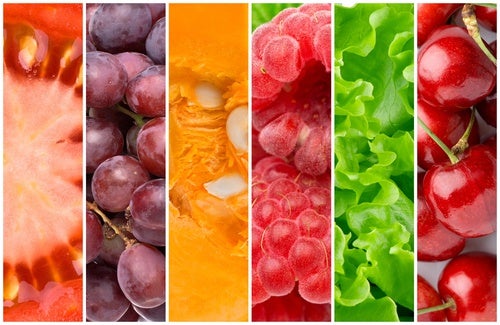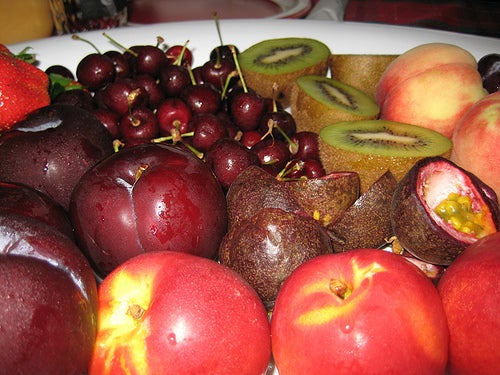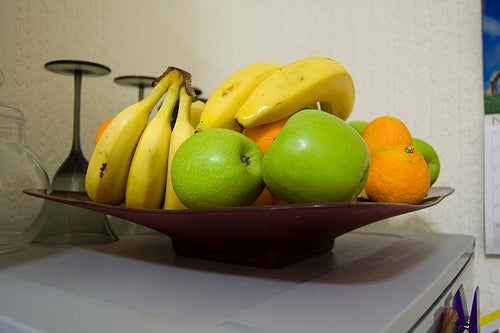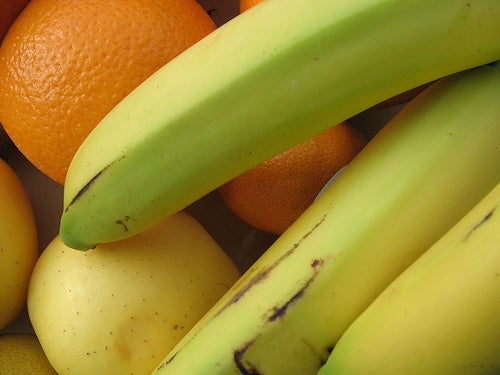The best time to eat fruit is in the mornings, so they give us energy and the body has time to burn glucose

If you are going on a hypocaloric diet for weight loss and meal plan says that you can eat a fruit mid-morning or the amount you want dinner to be very careful, as there are some species that are not as "slimming". Read more about this topic in the following article.
Fruit allowed in diets
Any diet (or the vast majority of the effective and healthy) allows you to eat a lot of fruit during the day. It is important to know how to choose what are ideal for your goal is met in a timely manner. How? According to calories that each provides to you. There is a table detailing each fruit nutritional value so you can choose those with less caloric content and can lose weight faster and easier.
Usually all have properties to lose weight, since they have few calories in relation to its volume or weight, provide satiety (especially when eating with shell), are purification of the organism due to the fiber, helping to drag the harmful substances out of the body, improve the intestinal transit and prevent constipation and finally they act as antioxidants, i.e. reducing the formation of radical free improves cellular metabolism and facilitate degradation of fats (lipolysis).

Some suggest that fruits should be eaten at a time apart from the main meals, already if we choose them as a dessert most of their nutrients and vitamins "lost" during the process of digestion of other dishes. They ferment in the stomach and make the process slower. That's not dropping many people well eat fruit for dessert. In that case, it is advisable to do so spaced meals, such as morning or average, at least 2 or 3 hours before or after lunch or dinner.

The best fruits to lose weight, i.e., the least caloric are PEAR, Apple, kiwi and Mandarin, in relation also to other components such as proteins, lipids and carbohydrates. The good thing is that we can always have of any of them at any time of the year.
Listing of calories from fruits
Keep this list in a visible location so that you can determine what eat more and which less or count the calories you are eating every day. The value is an approximate amount of 100 grams of fruit.- Watermelon: 15 calories
- Grapefruit: 26 calories
- Strawberry: 27 calories
- Medlar: 28 calories
- Raspberry: 30 calories
- Peach: 30 calories
- Melon: calories 30
- Mora: 35 calories
- Plum: 36 calories
- Blackcurrant: 37 calories
- PEAR: 38 calories
- Blueberry: 41 calories
- Mandarin: 41 calories
- Apple: 45 calories
- Fig: 47 calories
- Cherry: 48 calories
- Apricot: 52 calories
- Orange: 53 calories
- Pineapple: 55 calories
- Kiwi: 56 calories
- Grapes: 61 calories
- Granada: 62 calories
- Handle: 73 calories
- Banana: 85 calories
- Avocado: 232 calories

And what about nuts?
If we are looking for a diet rich in proteins, nuts are the best choice. The difference with fruits is that they have a lot of calories, but the good news is that the satiating power tends to be much higher. Here is the table of input calories in nuts Group (the amount is the same as fruits, 100 grams):- Prune: 177 calories
- Dry date: 256 calories
- Dry fig: 270 calories
- Raisin: 301 calories
- Chestnut: 349 calories
- Peanut butter: 452 calories
- Almond: 499 calories
- Sprocket: 568 calories
- Pistachio: 600 calories
- Hazelnut: 625 calories
- Walnut: 670 calories
Images courtesy of Sean McEntee, Kim Lowton, Clare Bell, Mario Diogo, Victor, Championship event catering, bogoni, Steve Parker.

0 comentarios:
Post a Comment